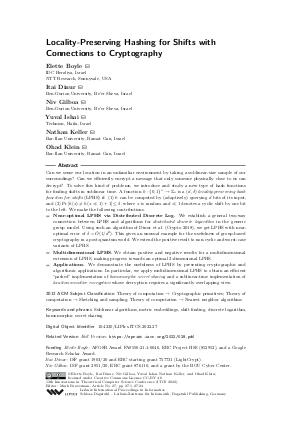LIPIcs.ITCS.2022.27.pdf
- Filesize: 0.89 MB
- 24 pages

 Creative Commons Attribution 4.0 International license
Creative Commons Attribution 4.0 International license

























Feedback for Dagstuhl Publishing